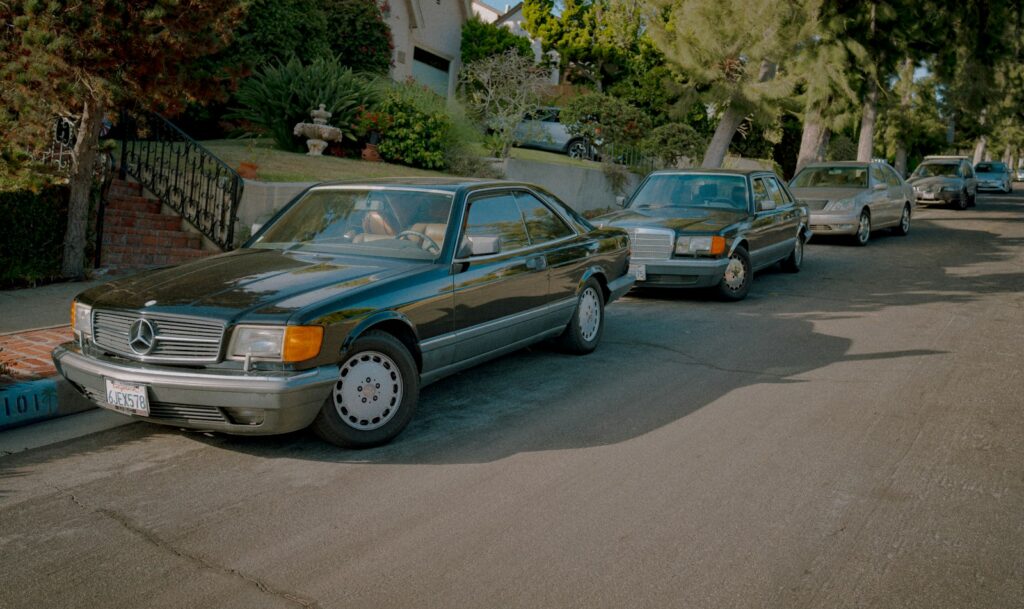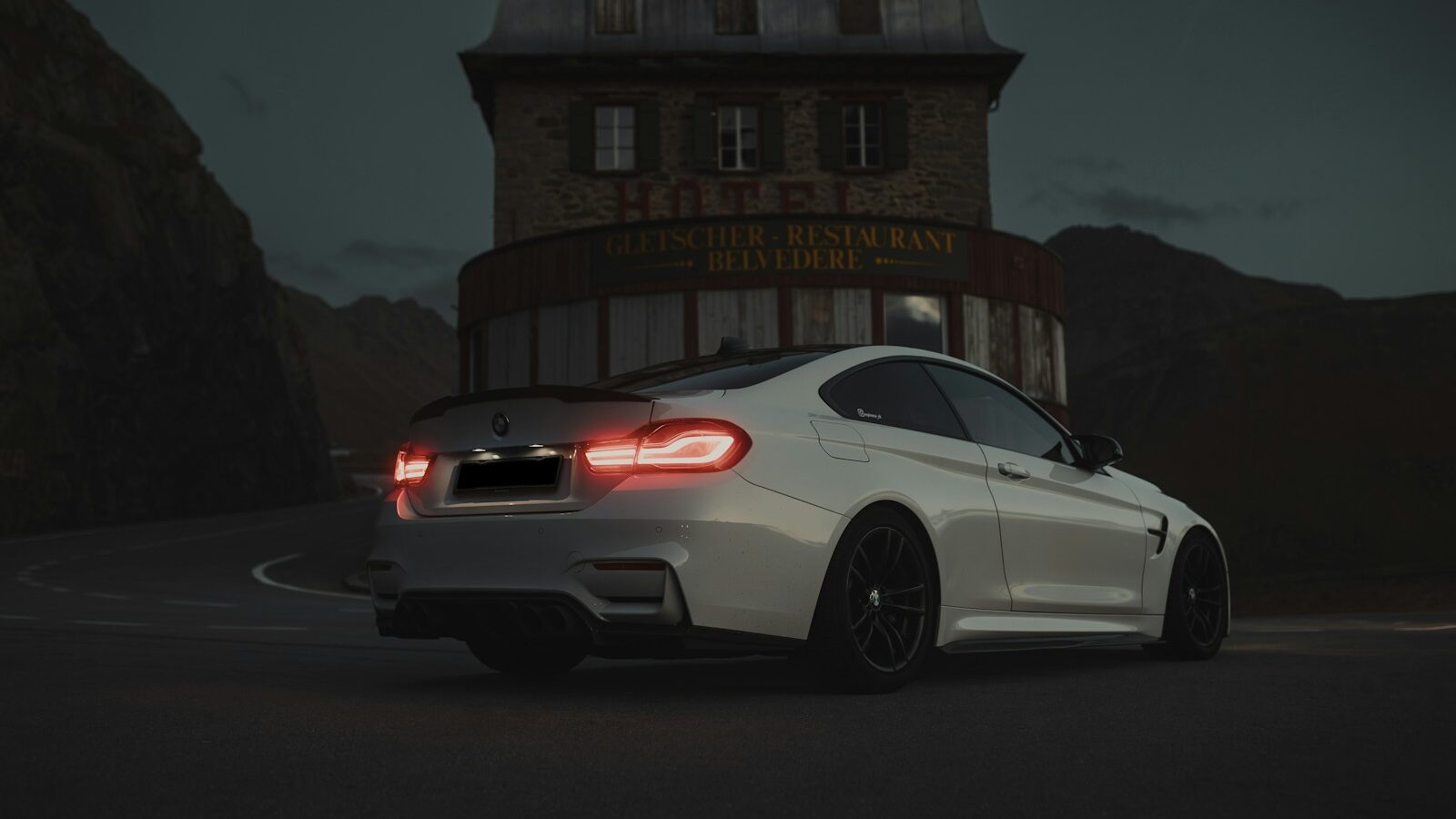A sleeper cars, also called a Q-car, hides real power behind a plain design. It looks like a normal family sedan or commuter car. But under the hood? It often runs neck and neck with flashy sports cars.
Why do these cars matter now? Because modern roads are packed with overpriced, overstyled vehicles. Sleeper cars give you pure speed without screaming for attention.
So, who’s this guide for? It’s built for gearheads who love raw power but don’t want to show off. It’s also great for smart shoppers who want a fast daily driver, and for anyone tired of loud, overpriced coupes. Sound like you? Let’s dive in.
What Is a Sleeper Car?
A sleeper car looks tame but hits hard. It blends in at stoplights but can outgun muscle cars from a dig. No giant spoilers. No wild paint. Just clean lines and serious speed.
The term “Q-car” started in the UK. It came from British naval ships marked with a Q that carried hidden weapons. On the outside, these ships looked harmless. But when enemies got too close, they struck fast. Cars with this same surprise factor earned the nickname.
How do sleeper cars compare to traditional sports cars? Sports cars shout “look at me!” with vents, wings, and low-profile tires. Sleepers keep quiet. But when you hit the gas? They speak loud and clear.
Key Characteristics of Sleeper Cars

What separates a sleeper from a showboat? A few key traits:
- Low-key styling: Sleepers don’t flash. They often wear factory wheels, stock grilles, and mild paint. They look like rental cars, or grocery-getters.
- Serious powerplants: Many sleepers run V8s, twin-turbos, or high-revving turbo fours. Some borrow engines straight from sports cars.
- No go-fast junk: You won’t find ground effects, giant wings, or “Type-R” badges. These cars stay silent about what they can do.
- Daily comfort: Most sleepers offer real space. Four doors. A decent trunk. Smooth ride. You can hit the drag strip Saturday and take the kids to school Monday.
Want to catch people off guard at a stoplight? This is your lane.
Why Choose a Sleeper Car?
Sleeper cars play a smart game. They deliver speed without the baggage.
- They fly under the radar. Cops rarely notice them. Thieves skip them. They don’t scream for trouble.
- They pack value. Many come used at half the price of a flashy coupe with the same horsepower. You’re buying performance, not looks.
- They work for real life. Need space for gear, groceries, or passengers? Sleepers don’t make you trade comfort for speed.
- They catch everyone off guard. Who expects that plain-looking sedan to pull a 0–60 in under five seconds?
Think of sleeper cars as wolves in business suits. You won’t win any parking lot beauty contests, but you might leave everyone behind at the green light.
Top Sleeper Performance Cars (With Stats)

These cars don’t brag, but they bring serious muscle. Here’s a closer look at 10 sleeper cars that crush expectations without showing off.
1. Chevrolet SS (2014–2017)
- Engine: 6.2L LS3 V8
- Horsepower: 415 hp
- 0–60 mph: 4.5 seconds
- Top Speed: 160 mph
- Why it’s a sleeper: Looks like a Malibu, hits like a Corvette. RWD layout, magnetic ride suspension, and zero flash.
2. Ford Taurus SHO (2010–2019)
- Engine: 3.5L twin-turbo V6
- Horsepower: 365 hp
- 0–60 mph: 5.2 seconds
- Top Speed: 133 mph
- Why it’s a sleeper: All-wheel drive keeps grip strong. Most folks see a fleet car. You see an underdog with boost.
3. Buick Regal GS (2018–2020)
- Engine: 3.6L V6
- Horsepower: 310 hp
- 0–60 mph: 5.4 seconds
- Top Speed: —
- Why it’s a sleeper: Sharp handling, clean design, and enough grunt to surprise entry-level German sedans.
4. MazdaSpeed6 (2006–2007)
- Engine: 2.3L turbocharged I4
- Horsepower: 274 hp
- 0–60 mph: 5.4 seconds
- Top Speed: 149 mph
- Why it’s a sleeper: AWD, turbo, and a 6-speed manual in a plain wrapper. It hides rally DNA inside a dad car.
5. BMW 550i (2003–2010)
- Engine: 4.8L V8
- Horsepower: 362 hp
- 0–60 mph: ~5.0 seconds
- Top Speed: 155 mph (limited)
- Why it’s a sleeper: Business-class looks with autobahn power. Most don’t know what’s under the hood.
6. Volvo V70 R (2004–2007)
- Engine: 2.5L turbocharged I5
- Horsepower: 296 hp
- 0–60 mph: 5.6 seconds
- Top Speed: 155 mph
- Why it’s a sleeper: It’s a wagon, with AWD and adjustable suspension. Hauls gear, groceries, and wins.
7. Audi S8 Plus (2016)
- Engine: 4.0L twin-turbo V8
- Horsepower: 605 hp
- 0–60 mph: 3.8 seconds
- Top Speed: 155–190 mph
- Why it’s a sleeper: Built like a limo, moves like a supercar. Nobody expects this much firepower in a boardroom shell.
8. Lexus IS500 (2023)
- Engine: 5.0L V8
- Horsepower: 472 hp
- 0–60 mph: 4.4 seconds
- Top Speed: 149 mph
- Why it’s a sleeper: Looks like a base IS. Runs like a backroad brawler. Smooth, sharp, and totally stealth.
9. Genesis G70 3.3T (Current)
- Engine: 3.3L twin-turbo V6
- Horsepower: 365 hp
- 0–60 mph: 4.5 seconds
- Top Speed: —
- Why it’s a sleeper: Quiet badge, loud performance. It’s the underdog that schools the class.
10. Volkswagen Passat R36 (2008–2010)
- Engine: 3.6L V6
- Horsepower: 296 hp
- 0–60 mph: 5.6 seconds
- Top Speed: —
- Why it’s a sleeper: Rare, all-wheel drive, and built for speed. If you know, you know.
Other Notable Sleepers to Consider
- Volvo S80 V8 – Hides 311 hp and AWD under executive styling.
- Chrysler 300C Hemi – V8 torque in a car that looks more luxury than launch-ready.
- Saab 9-2X Aero – WRX roots, but nobody sees it coming.
- Mercedes S600 – Twin-turbo V12, 600 hp. Smooth, silent, and scary fast.
- Jeep Grand Cherokee SRT8 – Looks tame for an SUV, but rips off a 0–60 around 5.0 seconds.
- Toyota RAV4 V6 (2006–2012) – Family-friendly crossover with hot hatch speed.
What Makes a Great Sleeper?
Visual stealth keeps the car unnoticed. No big vents. No carbon bits. Just clean lines and calm paint.
Unexpected speed separates a real sleeper from a wannabe. You want quarter-mile times that leave coupes behind.
Cabin space and comfort give these cars their edge. You don’t need to fold yourself into a two-seater to have fun.
Tuning potential matters too. Many sleepers have strong aftermarket support, bigger turbos, stronger internals, upgraded brakes.
Longevity seals the deal. Many of these cars run past 200,000 miles with regular care. Speed plus reliability? That’s the win.
Pros and Cons of Sleeper Cars
Pros:
- Quick without shouting.
- Works for commutes, road trips, or weekend blasts.
- Low profile means fewer theft risks.
- Insurers don’t always rate them like sports cars.
Cons:
- Older sleepers often skip modern tech.
- Repairs can cost more, especially on turbo or V8 setups.
- Some rare trims have limited parts or hard-to-find service options.
How to Spot and Buy a Quality Sleeper
Don’t trust the badge. A car’s logo rarely tells the full story. Focus on what sits under the hood and how it performs.
Search out performance trims. Names like SS, SHO, GS, and SRT often mark faster variants of basic models. Don’t overlook AWD versions or factory turbo builds.
Dig through spec sheets and forums. Enthusiast communities often track hidden upgrades, engine swaps, and production quirks. These places hold real-world insights you won’t find in dealer ads.
Check the maintenance history. A sleeper with power needs a clean service record, especially if it runs a turbo, V8, or dual-clutch gearbox. Look for signs of proper care: regular oil changes, no leaks, solid compression.
Know where to draw the line. Rare cars feel exciting, but balance rarity with reliability. What good is a fast car if it sits in the shop for months waiting on parts?
Want a sleeper that wins in the real world? Buy with your head, not just your heart.
Sleeper Cars in Pop Culture

You’ve seen sleepers in action, even if you didn’t realize it. Movies like The Fast and the Furious put tuned family cars on the map. In street racing scenes, it’s often the plain four-door that leaves everyone stunned.
Video games like Need for Speed, Gran Turismo, and Forza include sleepers in their lineups. These hidden heroes get love from players who want power without the pretense.
Online, sleeper fans run deep. Forums, Reddit threads, and YouTube builds spotlight rare trims and custom swaps. Car nerds know what’s fast, flashy or not.
So, next time you see a boring sedan take off like a rocket, ask yourself: sleeper or sleeper-in-disguise?
Trusted Resources for Stats and Shopping
Want real data? Use sites built for speedheads.
- HorsePowerSpecs.com – Lists engine types, horsepower, torque, and drivetrain setups across model years.
- ZeroTo60Times.com – Breaks down acceleration times, quarter-mile runs, and trap speeds.
- HotCars, CarBuzz, TopSpeed – Compare buyer guides, reviews, and hidden gem lists.
- MotorMatcher – A smart tool for finding sleeper models based on trim, power, and drive type.
Cross-check numbers. Look for owner feedback. And when in doubt, take it for a test drive and feel the difference.
Conclusion
Sleeper cars break the rules, in the best way. They look quiet but move quick. They haul groceries, then gap Mustangs at stoplights.
Want to buy the right one? Look for clean trims with strong engines, low-key bodies, and full service records. Don’t fall for just hype. Dig into specs, community reviews, and test-drive every option.
At the end of the day, sleepers deliver a rare mix: raw performance, daily comfort, and true underdog spirit. For smart car lovers, they’re the perfect blend of logic and speed.
Why chase flash when you can outrun it?
FAQs
- What is a sleeper car and why are they popular?
A sleeper car looks like a regular sedan, wagon, or crossover but delivers serious speed and performance. Car enthusiasts love them because they blend into traffic, cost less than flashy sports cars, and often avoid police or unwanted attention. - What are the best used sleeper cars under $20,000?
Some of the best sleeper cars under $20K include the Ford Taurus SHO, MazdaSpeed6, Volvo V70 R, and Chrysler 300C Hemi. These models combine stealth styling with turbo or V8 power at affordable prices. - Which sleeper cars are the fastest?
The Audi S8 Plus (605 hp, 0–60 in 3.8 sec) and Lexus IS500 (472 hp, 0–60 in 4.4 sec) are two of the fastest sleeper sedans you can buy. Both look subtle but hit sports car performance levels. - Are sleeper cars good for daily driving?
Yes. Most sleepers offer four doors, spacious cabins, and comfortable rides. That makes them perfect for commuting, hauling gear, or even school drop-offs, without giving up speed. - How can I tell if a car is a sleeper?
Look for factory performance trims like “SS,” “SHO,” or “SRT” on basic-looking models. Check under the hood for turbochargers, V8 engines, or tuned suspension. Performance forums often highlight hidden gems. - What is the most underrated sleeper car of all time?
Many car fans point to the Chevrolet SS (2014–2017) or MazdaSpeed6 (2006–2007). Both cars offered serious performance but flew under the radar due to bland styling and low sales numbers. - Are sleeper cars cheaper to insure than sports cars?
Usually, yes. Since sleeper cars don’t look fast, insurers often classify them in lower-risk categories, leading to cheaper premiums compared to obvious sports cars. - What’s the best V8 sleeper car for the money?
The BMW 550i (E60) and Lexus IS500 offer great V8 performance in low-key shells. They pack power, comfort, and subtlety into one daily-drivable package. - Can I modify a sleeper car to go faster?
Absolutely. Most sleeper platforms support aftermarket upgrades. You can tune the ECU, add performance intakes, upgrade brakes, or install better suspension, without changing the car’s sleeper looks. - Where can I find sleeper cars for sale?
Check used listings on CarGurus, AutoTempest, and enthusiast forums. Also watch auction sites like Bring a Trailer and Cars & Bids, which often list rare trims or overlooked performance sedans.





